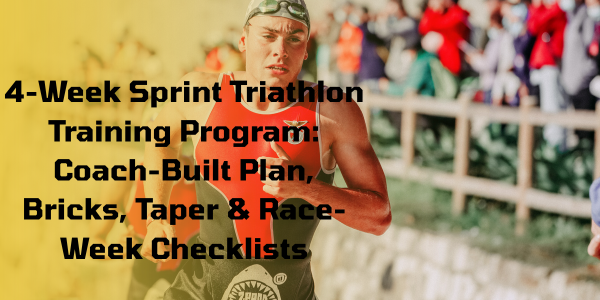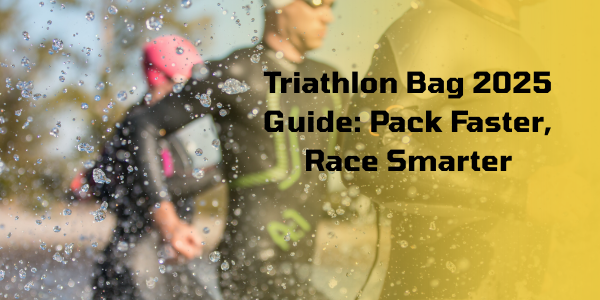Chafer Gel, Explained: Zero-Friction Confidence for Runners, Cyclists, Swimmers & Triathletes
Let’s be real—chafing steals races. This is your expert-built playbook for choosing and applying chafer gel (anti-chafe gel) the way pros do: wetsuit-safe options, gel vs balm vs cream, and field-tested routines for long miles, long rides, and salty open water.
Chafer Gel vs. “Chafe Gel”: Let’s Clear It Up
Many athletes type “chafer gel” when they mean anti-chafe gel (the friction-fighting kind), not buffet “chafer fuel.” In this guide, we’ll use chafer gel as a synonym for anti-chafing gel—and we’ll dial in what works best for running, cycling, swimming, and triathlon. If you want a deep dive on running-specific friction strategies, see our ultimate running anti-chafe guide.
Chafing 101: Why Endurance Sports Turn Up the Burn
Chafing happens when friction + moisture + heat + salt overwhelm your skin barrier. Add repetitive motion, seams, straps, and long duration, and even “tough” skin taps out. Hotspots cluster at inner thighs, underarms, under bra bands, along waistbands, nipples, groin, neck (wetsuits), and feet. Want a visual sense check? Here’s a useful, athlete-friendly reference on presentation and severity: what does chafe look like.
The goal isn’t to “tough it out.” The goal is to keep your barrier intact so you can keep moving fast. Smart prevention beats painful treatment.
Ingredient Science: Pick by Interface, Not Hype
Think in interfaces: skin-to-fabric (shorts, bras), skin-to-skin (inner thighs), and skin-to-equipment (chamois, neoprene). Your chafer gel should match the interface.
Dimethicone-rich gels (slick, inert, breathable)
Silicone-based gels create a low-friction, kit-friendly slip layer that thrives in humidity and high-sweat efforts—perfect under technical fabrics and for runners with acne-prone skin. For a quick primer on why sticks and gels behave differently on skin, scan our friction-fighting in 90 seconds.
Petrolatum & waxy balms (heavy duty, recovery-friendly)
Petrolatum excels for post-session recovery and for slow, cold efforts. Caveat: avoid petroleum products near neoprene—many wetsuit makers recommend non-petroleum lubes to protect adhesives. If you prefer a balm format, this science-backed balm breakdown helps you decide when a balm beats a gel.
Zinc oxide blends (rescue & maceration control)
When skin is already angry, zinc oxide pastes calm and protect. They’re a bit thicker, but for salt-rash and waterlogged zones, they’re clutch.
Gel vs Balm vs Cream vs Chamois Cream
Here’s the quick logic: Gel = fast slip Balm = long hold Cream = big coverage Chamois = pad hygiene. Cyclists often layer: chamois cream for pad-to-skin, plus a thin gel on inner-thigh seams for skin-to-fabric. For elite run-specific strategy, compare notes with our elite running prevention guide.
How to Apply Chafer Gel Like a Pro (Fast HowTo)
- Start clean & dry. If using sunscreen, let it set first.
- Map your hotspots. Inner thighs, underarms, bra line, waistband, nipples, wetsuit neck/ankles, chamois edges.
- Apply thin, even film. More isn’t better; coverage is.
- Test with kit on. Jog/stride/spin 30–60 seconds to confirm no grab points.
- Re-apply by duration. >90–120 minutes? Top up at aid stations or transitions.
- Post-session: Clean, pat dry, and recover with zinc or petrolatum if irritated.


Sport-Specific “Chafe Map” Playbooks
Running (road & trail)
For long runs, focus on inner thighs, underarms, under bra bands, waistband seams, and nipples. Re-apply every 90–120 minutes on humid days. Choosing shorts vs tights? Fabric choice changes friction: shorts or tights can be the difference between smooth and sandpaper. Trail athletes, pair this guide with our 25K trail progression to dial in re-apply windows on elevation days.
Cycling
Use chamois cream for pad hygiene—and a light chafer gel on inner-thigh seams and sit-bone creases to stop fabric rub. Curious how our approach compares across formats? Benchmark against the 2025 pro anti-chafe roundup.
Open-Water Swim & Triathlon
Prioritize wetsuit neck, underarms, cuffs/ankles. Many wetsuit brands recommend non-petroleum lubes to protect neoprene adhesives. In transitions, towel quickly, swipe targeted gel, and go. Pack like a pro with the Triathlon Bag 2025 guide and this transition bag checklist.
Building your race kit from scratch? Cross-check our expert gear overview: essential triathlon gear and the deeper dive into transitions: transition bag guide.
Comparison: Gel vs Balm vs Cream vs Chamois Cream
| Format | Best Interface | Durability | Humidity Fit | Wetsuit Safe | Mess Factor | Re-Apply Window |
|---|---|---|---|---|---|---|
| Gel (dimethicone-forward) | Skin↔Fabric, Skin↔Skin | High | Excellent | Yes (non-petroleum) | Low | 90–120 min |
| Balm Stick (waxes/petrolatum) | Skin↔Skin, Seams | Very High | Great in cold/wet | Check label | Low | 120–180 min |
| Cream (emulsion) | Large Coverage | Medium | Good | Varies | Medium | 60–90 min |
| Chamois Cream | Pad↔Skin | High (in-saddle) | Good | N/A | Medium | By ride length |
When Chafing Still Happens: Fix the Root Cause
Audit fit & fabric
Seams, tags, and rough fabrics multiply friction. If your arm swing is tight and shoulders creep up, underarm rub spikes—use these posture checkpoints alongside shoulder-pain fixes.
Hydration & salt strategy
Drier skin = happier barrier. Train your sweat rate and electrolytes; salty crust amplifies abrasion. Start with a clean, simple hydration stack from our hydration collection, and if you’re experiencing odd symptoms like tooth sensitivity on runs, this teeth-on-the-run explainer connects the dots.
Layer smarter (tri)
In T1, pat dry, apply a thin, wetsuit-safe gel on neck/underarms, then kit up. Want a bigger blueprint for race-day pacing, gear, and mindset? Bookmark our triathlon essentials blueprint.
Already chafed?
Clean gently, pat dry, consider zinc oxide for protection, then give the area air. Resume training with shorter sessions and strategic gel use. For run-only deep dives, compare the anti-chafe running cream guide.
How We Test at Streetlight (Why Our POV Is Different)
We validate chafer gel performance with lab-grade tribometer passes on wet synthetics, salt-spray stability, and neoprene interface checks—then we field-test during brick sessions in real heat. That rigor is why coaches point athletes to our Streetlight advantage.
Fast is fragile without skin integrity. Protect the barrier, protect the goal.
Looking for editor-tested picks and technique breakdowns? Start with the best running anti-chafe 2025, then get nerdy with the science mini-lesson. For tri-specific pre-race packing, keep this smart bag guide close. Pure running focus? This elite chafe-stick guide and our crush-friction playbook are your next stops.
Want broader running comfort wins? Explore shoulder mechanics, mouth/jaw considerations in teeth on the run, and the product-format nuance in running creams.
Planning a season ramp? Don’t miss the Streetlight stick advantage, race-week mental checklist in triathlon essentials, and if you’re debating “balm vs gel,” the balm science explainer.
New here? Start at our homepage and branch into performance-adjacent staples like hydration and recovery. For cyclists and triathletes building complete kits, weave chafer gel into your gear stack using the gear essentials blueprint.



